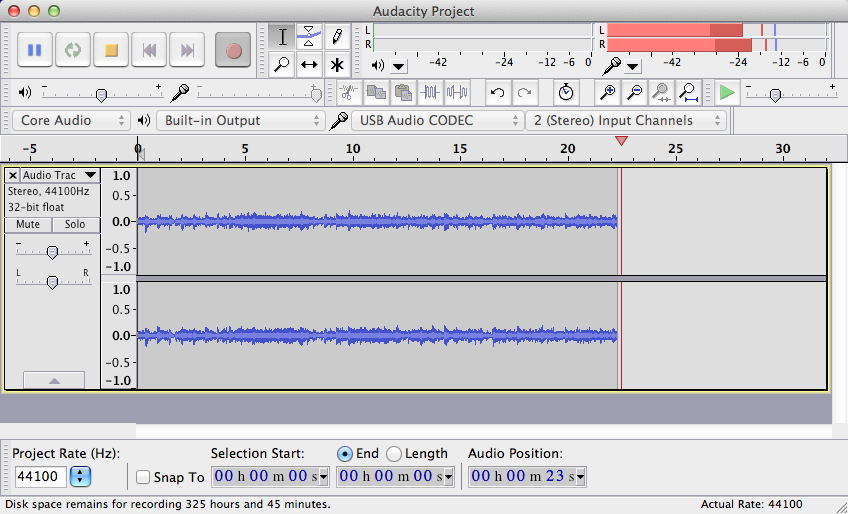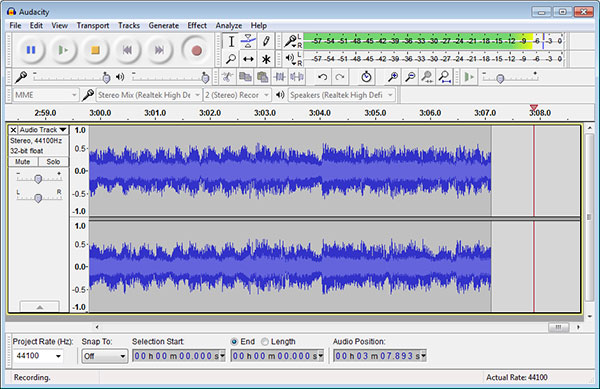

One of the most popular ones is actually free to use. There are lots of different audio editing tools available to you. Run a few test recordings to ensure you’re happy with the setup.Get closer to the microphone, but don’t get too close! Extend your hand fully and the distance between your thumb to your pinky finger is about the optimum distance you should be positioned from the mic.here’s usually a dial on the microphone itself. If you find there’s a low background hiss on your test recording try reducing the gain on the microphone a little.We suggest sit in the room and make a short recording, when you play it back it’ll help you to identify any ambient noises.

Turn off anything in the room that’s generating ambient noise, for example, a computer or air conditioning.Choose your place of recording carefully, insulated from street noise etc.And if you’re recording in a noisy environment use dynamic microphones.
#Audacity recording how to
They’re relatively inexpensive whilst also being high quality (here’s a guide on how to get the most out of them). In LearnUpon, we use blue yeti microphones. You can do a lot of enhancements to the file in ‘post-production’, but there are some things that once recorded, are there forever. Setting yourself up to record the best possible quality audio is better than getting a mediocre recording and trying to fix it later. In this post, we’ll show you how you can use a free audio program to create high-quality audio for your eLearning courses. Not everyone has access to studio quality equipment, but that doesn’t mean you can’t have great audio in your training courses. Poor audio quality is one of the most frustrating things you can subject your learners to.


 0 kommentar(er)
0 kommentar(er)
